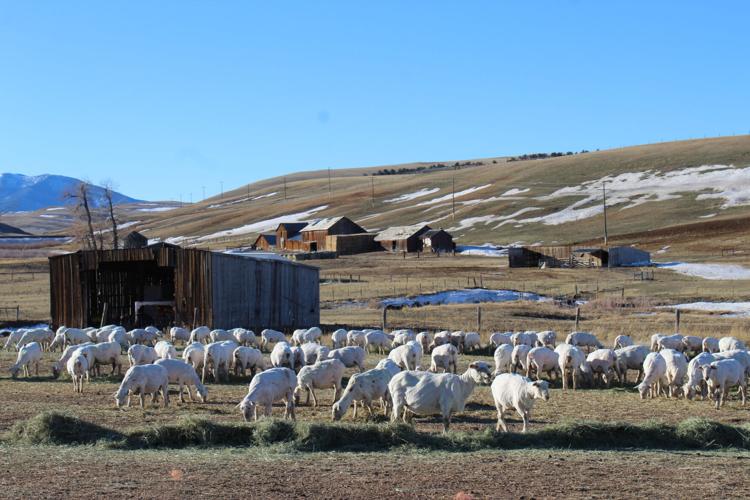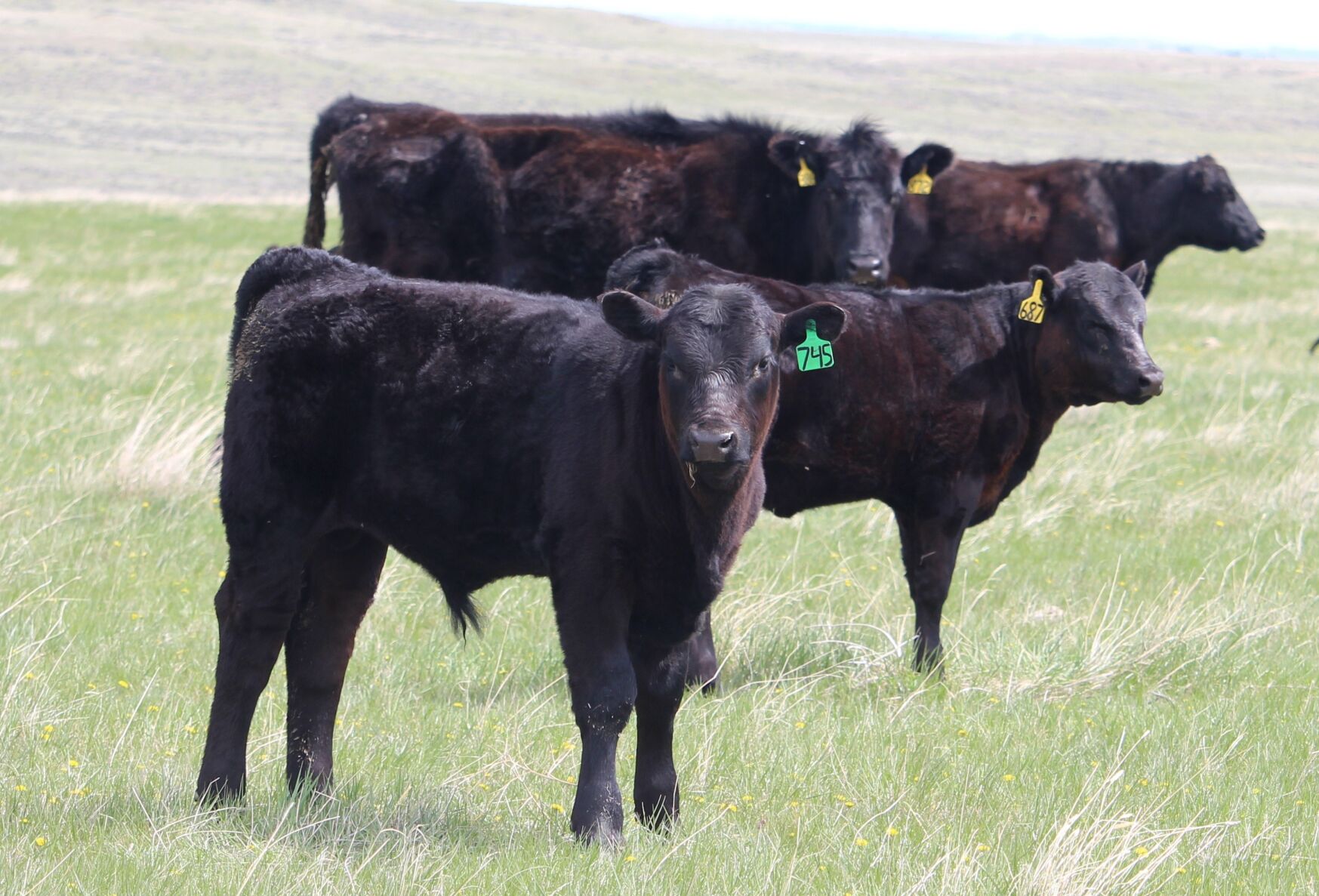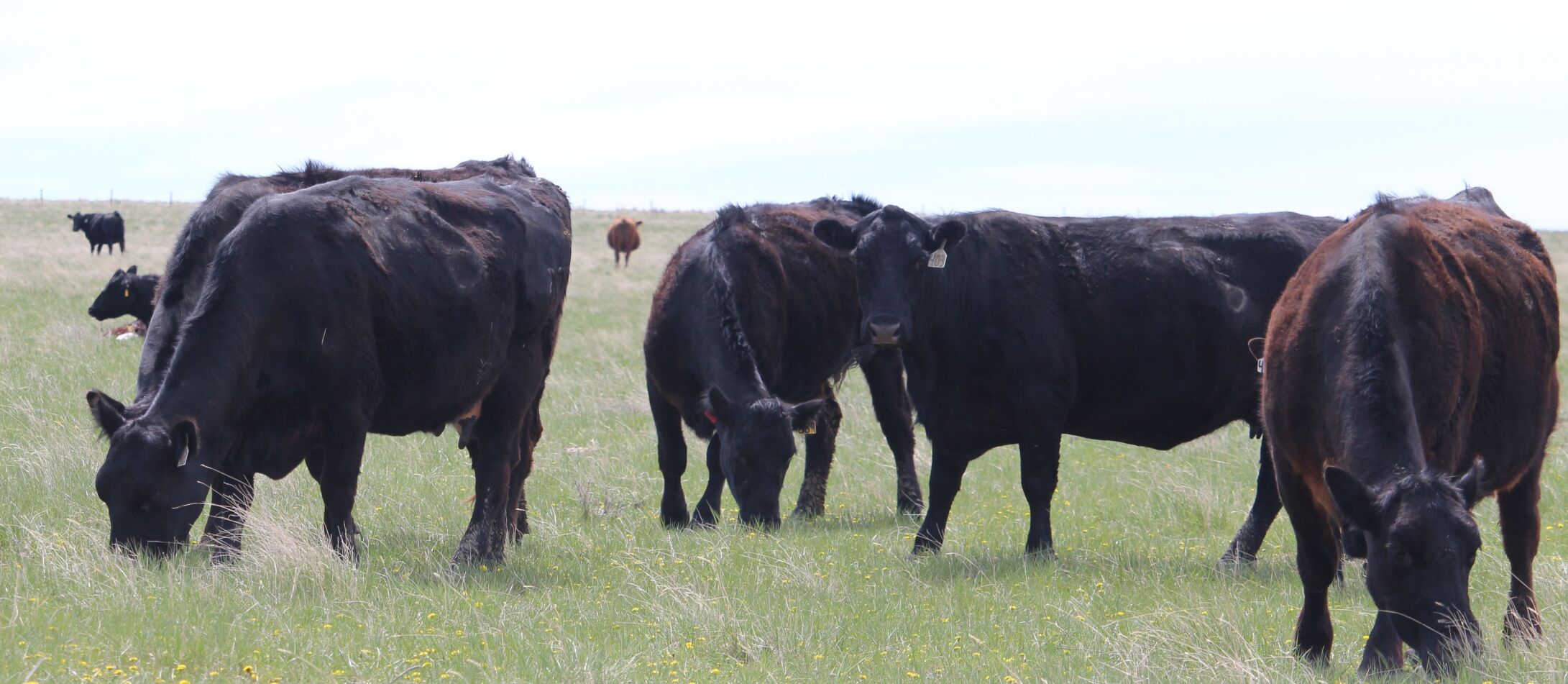Lewistown News-Argus: Tariffs could be important for beef, sheep industries
Saturday, April 19, 2025
Tariffs could be important for beef, sheep industries
Freshly shorn sheep graze on the ranch at Surprise Creek Colony in Central Montana. The market for U.S. lamb has been grim, and some producers argue tariffs might help.
- File photo
Tariffs could bolster the U.S. beef industry, producers say.
- Photo courtesy of Kris Descheemaeker
The cattle industry could see positive impacts from the Trump Administration’s tariffs.
- Photo by Kris Descheemaeker
In January and February, the U.S. exported almost 17,000 metric tons of beef to Canada and another 37,000 metric tons to Mexico, a total value of $359 million, according to the U.S. Meat Export Federation. In additional there were nearly $900,000 worth of lamb exports to the two countries.
Then in March, President Donald Trump announced 25% tariffs were in effect on those trading partners, and others, causing the National Farmers Union to warn against the impacts of future economic instability from trade wars.
However, not everyone in the agricultural sector sees tariffs as a bad deal.
Outlook grim for sheep industry“Around 70% of the lamb on the market and about 22% of beef is imported,” said Grass Range rancher Gilles Stockton. “The U.S. sheep industry is in serious trouble because it became cheaper for U.S. buyers to import lamb from Australia and New Zealand, and that’s led to a collapse of our domestic sheep industry.”
Stockton said there are similar concerns about the direction the beef industry is headed.
As a producer, Stockton is keeping his eye on the Federal government’s response to an industry petition to consider the damage the trade imbalance has created.
“I didn’t sign the petition but I’m watching it closely,” Stockton said, adding the petition was advanced by R-CALF USA, which represents U.S. cattle and sheep producers on domestic and international trade and marketing issues.
Bill Bullard of Billings is the R-CALF CEO, and said his organization asked the government for an investigation of the impacts of meat imports long before tariffs were announced.
“In August of 2023 we submitted a request to the U.S. Trade Ambassador under Section 201 to declare that lamb and beef imports were causing substantial injury to our domestic industry,” Bullard said. “They never even acted on it.”
Last month one of Bullard’s weekly addresses to R-CALF members asked the question, “Will tariffs arrive in time to save American lamb?”
In that address Bullard said the U.S. sheep industry provides a case study for other livestock sectors as an example of market failure.
“From 2012 through 2023, lamb consumption in America increased by more than 40%. Now, a functional market would predict that domestic lamb production would likewise grow by about that amount, but it certainly would not predict that domestic production would decline. But that’s exactly what happened, domestic lamb production fell nearly 17% while consumption grew more than 40%,” Bullard said, adding it was a crystal-clear example of severe market failure as a result of the impact of cheap imported meat.
Tariffs to the rescue?
Bullard and R-CALF are hitting back at trade policies they see as tilted in favor of other countries.
Bullard said the domestic sheep industry has been decimated by imports, and he fears the cattle industry could be headed in the same direction.
“Our cattle industry is unique in that we under-produce; we produce less that what the demand is,” he explained. “We saw a rise in imports over the last decades from foreign beef products to meet that demand. We need tariffs and quotas. Tariffs have a legitimate purpose in protecting supply chains. We need them to protect critical industries and stabilize markets. It’s important for national security.”
Bullard has suggested a 10-year plan that includes tariffs and tariff rate quotas could turn things around for the sheep industry and keep the cattle industry from heading in the wrong direction.
“Tariff rate quotas are the reason we have sugar and peanut industries. It’s a limit on the volume that can be imported every year. After that import limit is reached, either imports can stop entirely or if exceeded, they have to pay a tariff,” Bullard explained.
Bullard said if the government acts on R-CALF’s petition, a tariff quota system could be put in place to help the U.S. sheep and beef industries stabilize and begin rebuilding.
Montana beef market is strong
Beaver Creek cattle rancher Todd Olsen said he feels Montana’s beef industry is in a stronger position than other states and may be able to weather any negative impacts resulting from trade wars pretty well.
“Nothing’s really happened yet. We just need to hold on a bit and I think it’s going to be ok,” Olsen said. “Montana beef is highly sought after. We have trade partners that want Montana beef. I’m still 100% optimistic on our Montana products. There’s enough demand for them to make up for any tariff impacts.”
Last year, Montana exported $282.7 million worth of agricultural products, the state’s third most valuable export category after chemicals ($533 million) and minerals and ores ($330.4 million), according to the Montana Department of Commerce Fact Sheet. Canada is by far and away Montana’s top trade partner.



